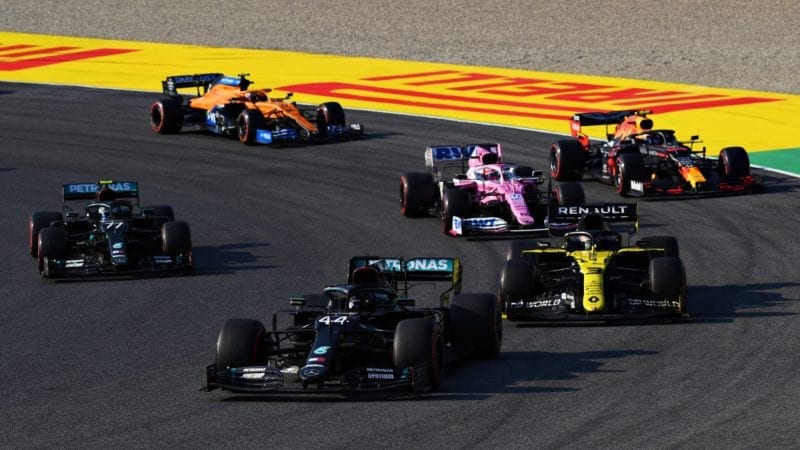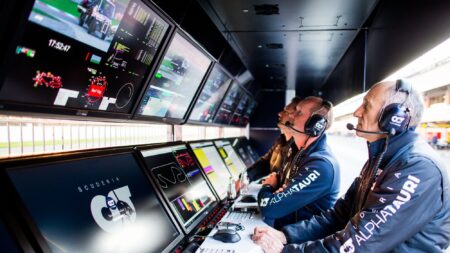“In our board room in Piccadilly, we’ve got this fabulous artwork of the start at the Nürburgring in the 1970s, four cars on the first row, three on the second row, four on the third row. To have a look at things like that, you can only do it in a test environment.”
The hope is that it will all combine to produce a better spectacle on track. The 2022 cars will be the first real showing for the data-driven process but Symonds is confident that the methods used by F1 will produce the intended outcome and improve the show.
“I think that we will see that we’re moving in the right direction. It’s taken quite a while to build some of these tools; the virtual testing environment it’ll be late next year by the time we’re really starting to use that and by then we’ll have found things we need to be improving on it. 2022 will be a development year with that, ’23 will be the year when it gives us some good directions.”
Symonds says he is keen to trial new and innovative formats using the pro line-up to test and tweak potential and existing regulations, with typical simulation not able to give a clear indication of what might play out on track in reality.
In addition to the virtual testing environment, F1 is currently working with a sophisticated overtaking model and simulator, with artificial intelligence able to simulate race scenarios thousands of times however it won’t be relied upon exclusively, as Symonds explains.
“To have a look at things like that (race starts), you can only do it in a test environment, you can’t do it physically. You can’t do it just using simulation because it will just tell you the obvious thing if you start cars closer together they’ll arrive at the first corner closer together.
“What that doesn’t give you is are you going to ruin the race because you’ll have nobody left in the race after so many accidents or are you have some exciting things happening on the first lap? It’s a very sophisticated sim racing environment.”






